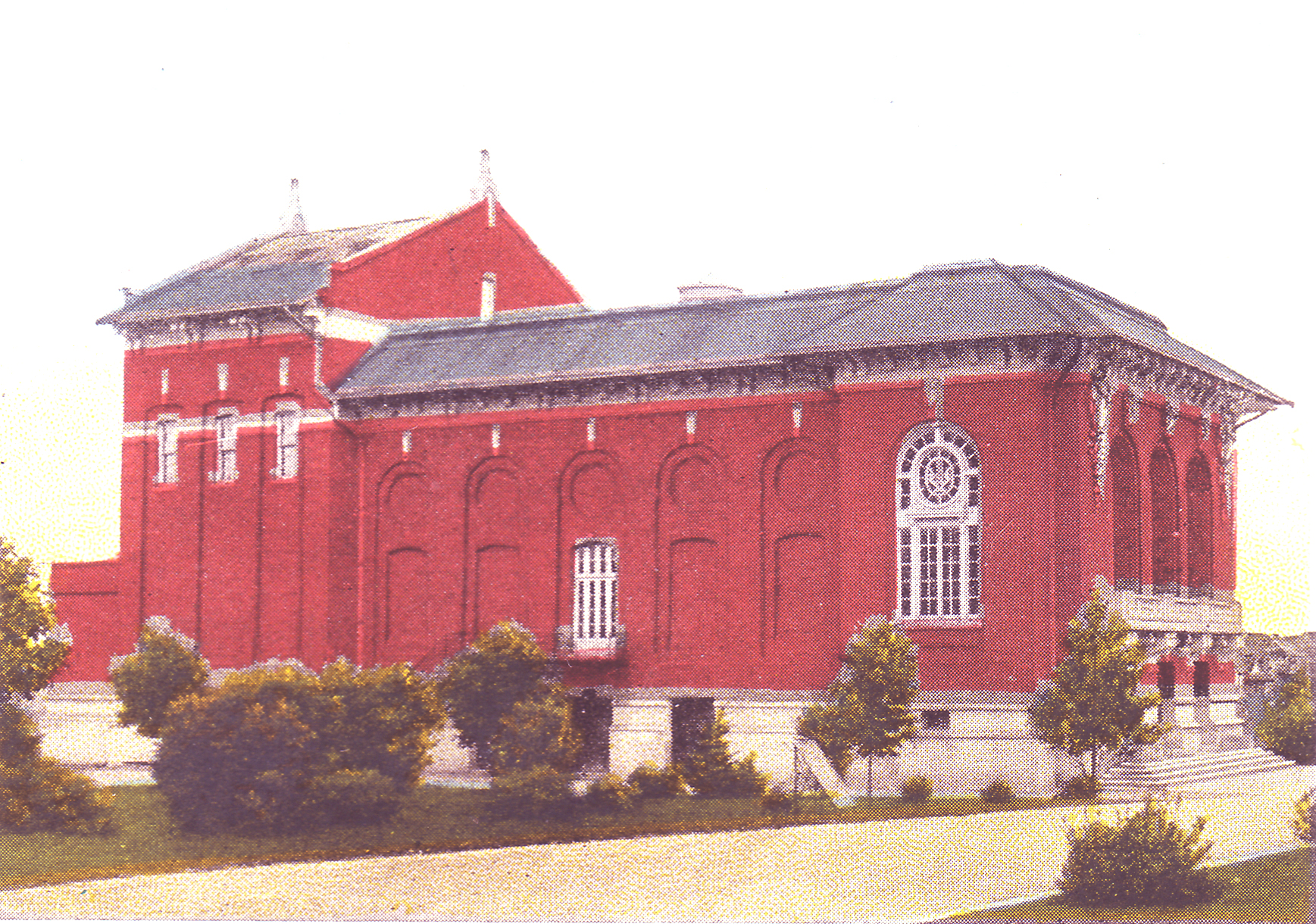Bobby Funk, professor of theater at ETSU, has the noble mission of restoring VA Center’s beautiful Memorial Hall to that of its heyday. When the Mountain Branch of the National Home for Disabled Volunteer Soldiers was established in 1901, it was the fulfillment of a dream that President Abraham Lincoln once had.

Many Civil War soldiers had lost an arm or leg by amputation, the commonest and cruelest form of battleground surgery. The veterans required entertainment to take their minds off their physical and mental afflictions. The 600-seat Memorial Hall was built in 1906 to address that need. It was modeled after the Lincoln Theatre in Washington, D.C.
The edifice has three massive arched windows that open onto a huge stone balcony with carved stone balustrade railing at the second floor foyer level. Below them are three deeply recessed wood and glass doors. Visitors to the Home once arrived by buggy, automobile, flivver (small inexpensive older car) or trolley. Events had to be concluded by 9:30 p.m.; that is when the facility gates were closed and the trolley ceased operation.
Vaudeville acts, light opera and plays were quite common. In 1912, George M. Cohan's “45 Minutes From Broadway” opened the season. Later, Bud Fisher's original “Mutt and Jeff” played there with a cast of 50 people. The June 13, 1912 musical production, “American Girl,” is purported to be the first production by a local dramatic group. Johnson City Dramatic Club participants included Angeline Ward, Leone Wagoner, Robert Lyle and T.B. Cook.
A popular showing between 1912 and 1917 was the Mark Sennett production of Keystone Cops, a slapstick police department spoof that featured distinguished actors Charlie Chaplin and Fatty Arbuckle. Tuesday and Thursday nights became movie nights, projecting such silent black and white films as “His Picture In The Papers” (1916, Douglas Fairbanks), “Hell’s Hinges” (1916, William S. Hart) and “Hearts of the World” (1918, Lillian Gish and Robert Harron).
Preceding each motion picture, the National Soldier’s Home band performed an overture for attendees and then supplied accompaniment for the silent film. Resident veterans were admitted free; family members were charged a nickel. In addition, the band gave a concert at the gazebo bandstand in the park overlooking beautiful Buffalo Mountain every Monday, Wednesday and Friday evening and another one at Memorial Hall on Sunday night.
According to Funk: “About eight years ago, I discovered Memorial Hall. I thought it was beautiful and wanted to do something with it. A contract allows ETSU to lease and maintain the theatre for 35 years at no charge.
“New curtains were purchased, interior painted, roof repaired and carpet replaced. We are in the process of redoing the dressing rooms. We hope to install heating and air-conditioning in the building to prevent further deterioration resulting from paint peeling and plaster cracking. We sell regular and box seats as part of a fund raising effort called “Remember our Vets.” Bobby said they currently rent the theatre to various groups to accumulate money for further restoration. Two years ago, they celebrated the 100thanniversary of the theatre.”
The university professor commented that the local city newspaper once reviewed performances at Memorial Hall, often quoting the older veterans such as this one known only as “Old Shorty”: “This play was mighty fine. The girls sang great, but they weren’t as pretty as the girls last time.”

Comments are closed.